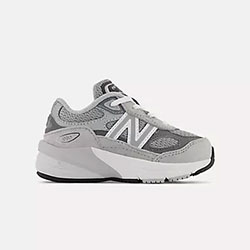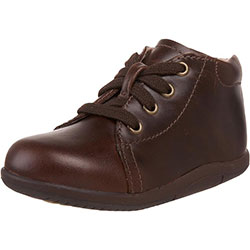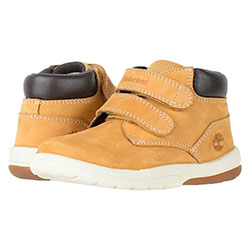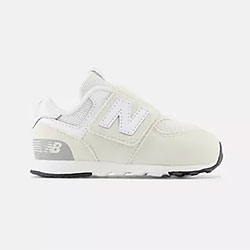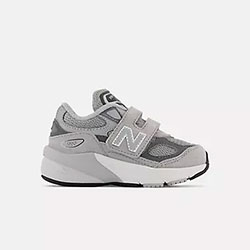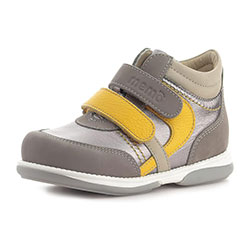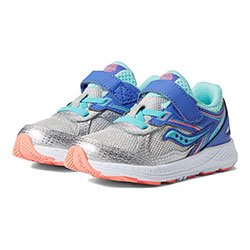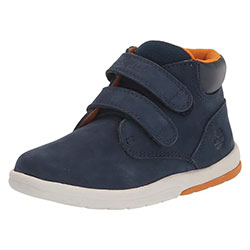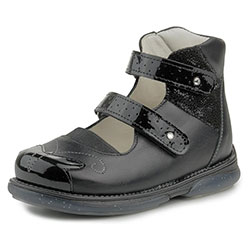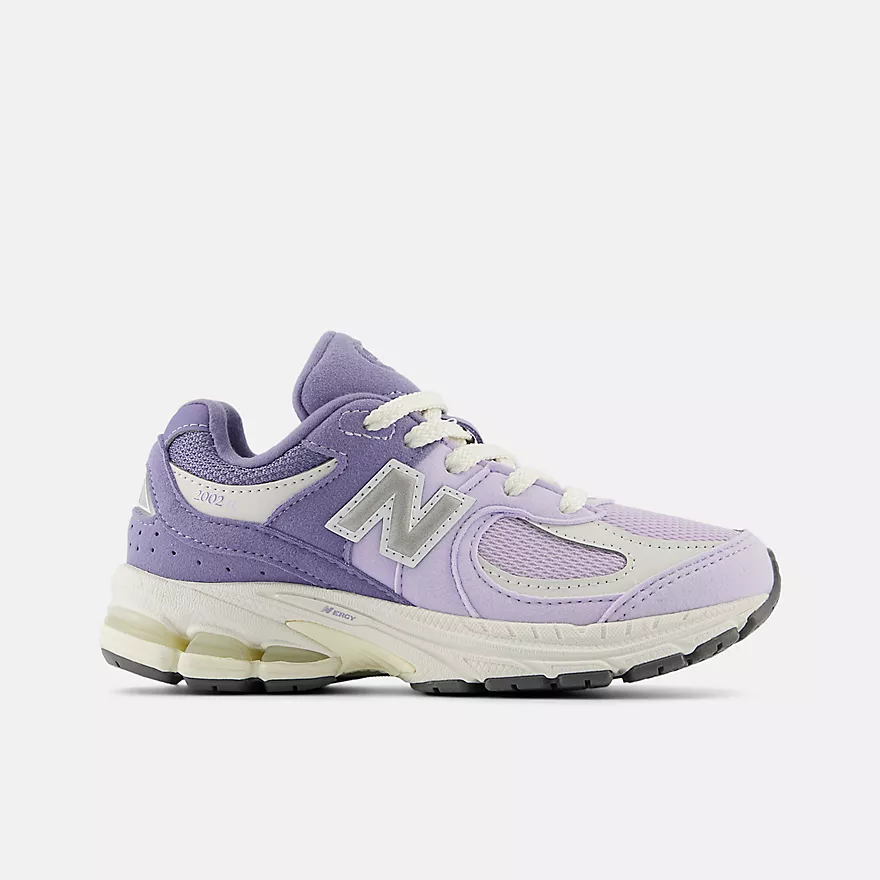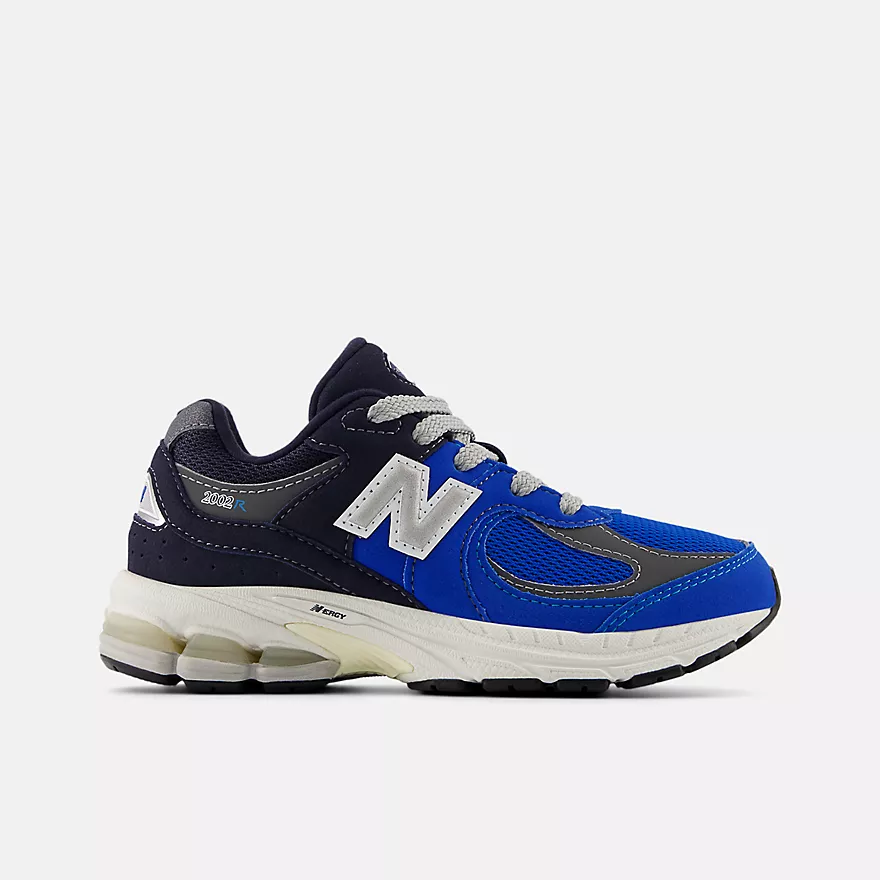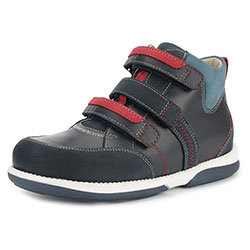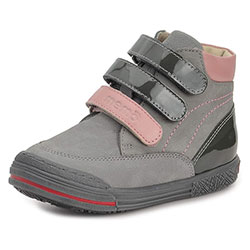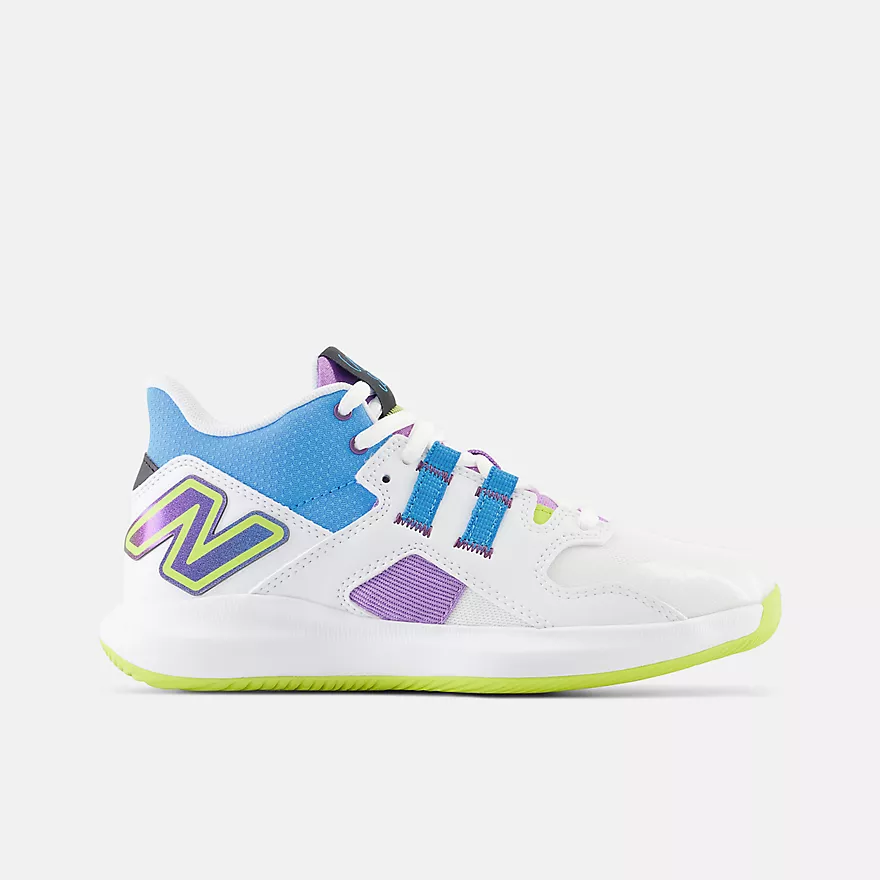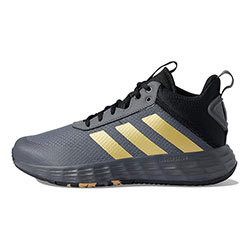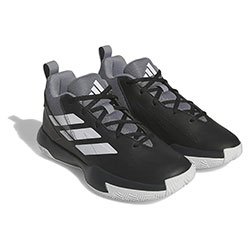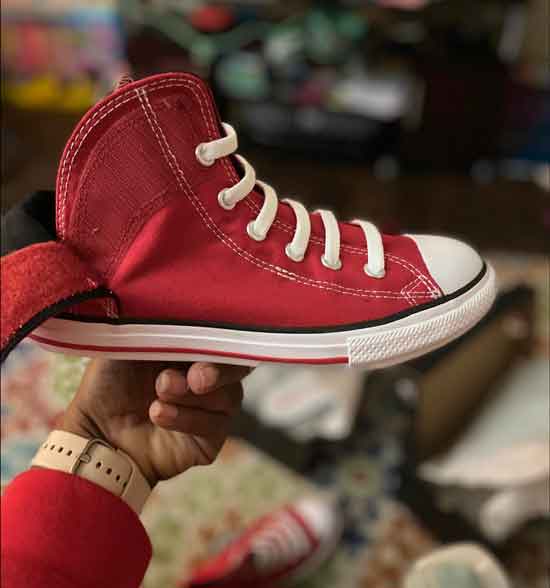Best Kids’ Shoes for Femoral Anteversion – Improve Your Child’s Stability and Foot Posture!
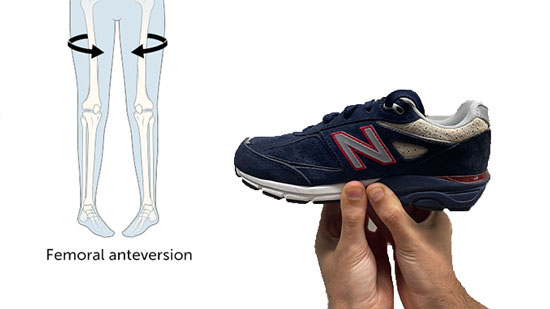
Have you noticed your child walking with his or her feet turned inward? Has your medical professional diagnosed your child with femoral anteversion and recommended a pair of supportive shoes but didn’t specify which ones to get? There are certain children’s shoes that provide a stable base of support, firm heel counters, and straight lasts, that can help improve your child’s stability, foot posture, and walking gait. When shoes are not effective, orthotics might be diagnosed. I am going to show you a list of the best kids’ shoes for femoral anteversion based on my many years of shoe fitting experience as well as key information pertinent to this condition.
Kindly note that if you are in a rush you can go directly to the selection of shoes for children with femoral anteversion.
Most of the shoes I will show you in this article are your regular everyday sneakers that simply provide better structure and support than others. However, I will also show you a smaller list of orthopedic shoes that have proven to be really effective.
Understanding Femoral Anteversion in Children
According to Boston’s Children’s Hospital, femoral anteversion is a condition in which a child’s thigh bone (femur) twists inward more than normal. This can affect the alignment of the hip and knee joints leading to unique challenges in maintaining proper posture and gait. While medical management is essential for addressing the underlying condition, selecting the right shoes can play a supportive and crucial role in improving your child’s foot posture.
Consider that femoral anteversion occurs in approximately 10% of children and is more common in girls than boys.
What Are the Symptoms of Femoral Anteversion in a Child?
Children with femoral anteversion may trip and fall more than their peers, but the condition is rarely painful. Some children and families are also concerned that their walking and appearance may be different from their peers. The two most common symptoms of femoral anteversion are:
Toes facing inward:
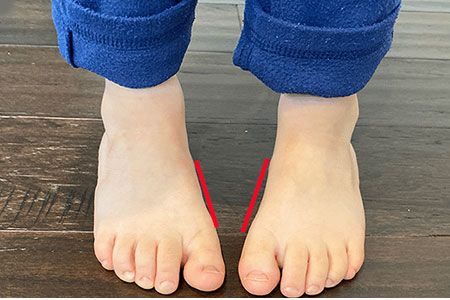
Bowed legs:

What Is the Best Treatment for Femoral Anteversion?
The least invasive treatment involves fitting your child in the correct pair of shoes to help improve foot posture, walking gait, and reduce tripping. In some cases, orthotics such as “gait plate” inserts might help encourage the feet to turn outwards when walking and running. Specific stretching and strengthening exercises might help rebalance the muscles and ligaments.
I am not a medical professional, but in my experience, femoral anteversion usually improves as a child grows. With that said, something so simple such as fitting your child in the correct types of shoes can make a world of difference.
Before and After Images – What a Difference the Correct Pairs of Shoes Can Make!
Before Image

After Image
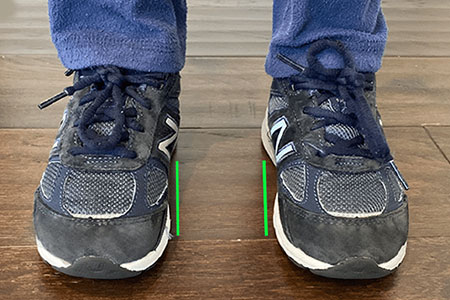
What an amazing difference the correct pair of shoes can make!
5 Shoe Factors to Consider for a Child with Congenital Anteversion of the Femur
When choosing shoes for a child with congenital anteversion of the femur, there are a few key factors to keep in mind:
1️⃣ Arch Support: Shoes with good arch support can help a child maintain better posture. This will assist in distributing the weight evenly and reduce the strain on the legs.
2️⃣ Stability and Cushioning: Opt for shoes with excellent stability and cushioning, these properties help to absorb shock and provide comfort while promoting balanced weight distribution.
3️⃣ Straight Lasts: This feature helps prevent the forefoot from pushing out. You need to stay away from shoes that have an excessively curved last as they lack heel stability. Most Nike, Adidas, and Under Armour shoes come with a curved or semi-curved last.
4️⃣ Orthotic Compatibility: If your child’s healthcare provider recommends orthotic insoles, it’s essential to select shoes that can accommodate them. These insoles are designed to provide additional support tailored to your child’s needs.
5️⃣ Wide Toe-Box: A wider toe-box offers more room for your child’s toes to spread naturally, this is crucial for balance and stability.
Remember that the best shoes for your child may depend on their unique needs and the severity of their condition, and overall health. Therefore, it’s fundamental to seek medical advice and consider these factors when shopping for shoes to improve your child’s foot posture with femoral anteversion.
Best Kids’ Shoes for Femoral Anteversion
Disclosure: Some links in this post may be affiliate links and we may receive a small commission (at no extra cost to you) when you click our links and make purchases.
- The New Balance shoe style 990V6 is available for toddlers, little, and big kids
- Available in laces and velcro
- Fits children with medium, wide, or extra wide feet
- Suede/mesh upper provides durability and breathability
- Order this shoe half a size larger than your toddler’s current foot size
- The New Balance shoe style 990V6 is available for toddlers, little, and big kids
- Available in laces and velcro
- Fits children with medium, wide, or extra wide feet
- Synthetic/mesh upper provides durability and breathability
- Order this shoe half a size larger than your toddler’s current foot size
- The Stride Rite shoe style Elliot is available for toddlers
- Lace-up closure
- Fits toddlers with medium, wide, or extra wide feet
- 100% leather made
- Order this shoe half a size larger than your toddler’s current foot size
- The Stride Rite shoe style Emilia is available for toddlers
- Lace-up closure
- Fits toddlers with medium, wide, or extra wide feet
- 100% leather made
- Order this shoe a whole size larger than your toddler’s current foot size
- The Timberland shoe style Tracks is available for toddlers
- Double velcro straps
- Fits toddlers with medium or wide feet
- Water-friendly
- Order this shoe a whole size larger than your toddler’s current foot size
- The New Balance shoe style 574 is available for toddlers
- Available in velcro and laces
- Fits children with medium, wide, or extra wide feet
- Synthetic/mesh upper provides durability and breathability
- Order this shoe a whole size larger than your toddler’s current foot size
- The New Balance shoe style 990V6 is available for toddlers, little, and big kids
- Available in velcro and laces
- Fits children with medium, wide, or extra wide feet
- Synthetic/mesh upper provides durability and breathability
- Order this shoe a half size larger than your toddler’s current foot size
- The Memo shoe style Gabi is available for toddlers and little kids
- Double velcro straps
- Fits children with medium or wide feet
- Genuine leather and breathable mesh
- Thermoplastic asymmetric stiff heel counter for proper feet protection and stabilization
- Order this shoe half a size larger than your toddler’s current foot size
- The Memo shoe style Gabi is available for toddlers and little kids
- Double velcro straps
- Fits children with medium or wide feet
- Genuine leather and breathable mesh
- Thermoplastic asymmetric stiff heel counter for proper feet protection and stabilization
- Order this shoe half a size larger than your toddler’s current foot size
- The Saucony shoe style Cohesion is available for toddlers
- Velcro closure
- Fits toddlers with medium or wide feet
- Heel grid system for stable cushioning
- Compression molded EVA footbed for comfort
- Order this shoe a whole size larger than your toddler’s current foot size
- The Timberland shoe style Bootie fits toddlers and little kids
- Double velcro straps
- Fits children with medium or wide feet
- Padded collar for a comfortable fit around the ankle
- Water-friendly
- Order this shoe a whole size larger than your toddler’s current foot size
- The Memo shoe style Princessa fits toddlers and little kids
- Double velcro straps
- Fits children with medium or wide feet
- This is an ORTHOPEDIC shoe
- Rigid heel counter
- Order this shoe half a size larger than your toddler’s current foot size
- The Saucony shoe style Cohesion KDZ is available for little and big kids
- Velcro closure
- Fits children with medium and wide feet
- Heel grid system for stable cushioning
- Compression molded EVA footbed for comfort
- Order this shoe a half size larger than your child’s current foot size
- The Saucony shoe style Cohesion KDZ is available for little and big kids
- Velcro closure
- Fits children with medium and wide feet
- Synthetic and mesh upper
- Heel grid system for stable cushioning
- Order this shoe half a size larger than your child’s current foot size
- The New Balance shoe style Fresh Foam 650 is available for little and big kids
- Fits children with medium, wide, or extra wide feet
- Velcro closure
- ABZORB midsole absorbs impact through a combination of cushioning and compression resistance
- Mesh upper material features no-sew overlays for a sleek fit and feel
- Order this shoe half a size larger than your child’s current foot size
- The New Balance shoe style Fresh Foam Arishi v4 is available for little and big kids
- Fits children with medium, wide, or extra wide feet
- Velcro closure
- ABZORB midsole absorbs impact through a combination of cushioning and compression resistance
- Mesh upper material features no-sew overlays for a sleek fit and feel
- Order this shoe half a size larger than your child’s current foot size
- The New Balance shoe style 2002 is available for toddlers and little kids
- Available in laces
- Fits children with medium and wide feet
- Suede/mesh upper provides durability and breathability
- Order this shoe half a size larger than your toddler’s current foot size
- The New Balance shoe style 2002 is available for toddlers and little kids
- Available in laces
- Fits children with medium and wide feet
- Suede/mesh upper provides durability and breathability
- Order this shoe half a size larger than your toddler’s current foot size
- The New Balance shoe style Fresh Foam 650 is available for little and big kids
- Fits children with medium, wide, or extra wide feet
- Velcro closure
- Synthetic and engineered mesh upper
- Fresh Foam midsole cushioning is precision engineered to deliver an ultra-cushioned, lightweight ride
- Order this shoe a half size larger than your child’s current foot size
- The Memo shoe style Polo is available for little and big kids
- Triple velcro straps
- Fits children with medium or wide feet
- This is an orthopedic shoe
- Thermoplastic rigid heel counter
- Order this shoe a half size larger than your child’s current foot size
- The Memo shoe style Chicago is available for little and big kids
- Triple velcro straps
- Fits children with medium or wide feet
- This is an orthopedic shoe
- Thermoplastic rigid heel counter
- Order this shoe a half size larger than your child’s current foot size
- The New Balance shoe style Coco is available for little and big kids
- Lace-up closure
- Fits children with medium or wide feet
- NDurance rubber outsole technology provides superior durability in high-wear areas to help get more out of the shoes
- Order this shoe a half size larger than your child’s current foot size
- The Adidas shoe style Own the Game 2.0 is available for little and big kids
- Lace-up closure
- Fits children with medium or wide feet
- Supportive outsoles and firm heel counter
- Order this shoe a half size larger than your child’s current foot size
- The Adidas shoe style Cross Em Up Select is available for little kids
- Lace-up closure
- Fits children with medium or wide feet
- Non-marking outsole
- Order this shoe a whole larger than your child’s current foot size
- The Saucony shoe style Kinvara LTT is available for little and big kids
- Lace-up closure
- Fits children with medium or wide feet
- Cushioned footbed
- Order this shoe a whole size larger than your child’s current foot size
- The Saucony shoe style Shadow 6000 is available for little and big kids
- Lace-up closure
- Fits children with medium or wide feet
- Cushioned footbed
- Order this shoe half a size larger than your child’s current foot size
- The New Balance shoe style 574 is available for little and big kids
- Lace-up closure
- Fits children with medium or wide feet
- ENCAP midsole cushioning provides good arch and heel support
- Order this shoe half a size larger than your child’s current foot size
- The New Balance shoe style 327 is available for little and big kids
- Lace-up closure
- Fits children with medium or wide feet
- Suede and mesh upper
- Order this shoe a whole size larger than your child’s current foot size
- The New Balance shoe style Fresh Foam X 1080v13 is available for big kids
- Lace-up closure
- Fits children with medium or wide feet
- Suede and mesh upper
- Order this shoe half a size larger than your child’s current foot size
- The New Balance shoe style Fresh Foam X 1080v13 is available for big kids
- Lace-up closure
- Fits children with medium or wide feet
- Suede and mesh upper
- Order this shoe half a size larger than your child’s current foot size
Do You Have a Specialized Children’s Shoe Store in Your Area?
I always recommend that parents take their children to be properly fitted for shoes at their local shoe store. However, many department store employees work on commission. Their primary goal is to make a sale. So please take this into consideration when you shop. Independent stores will usually have the most experienced shoe fitters while department stores will usually have salespeople. If you don’t have a children’s shoe store in your area that you trust, I am going to show you the simplest, yet most effective way to measure your child’s foot size from home and a selection of the best fitting shoes for children.
Get the Right Measure of Your Child’s Feet – Order the Correct Shoe Size Online
Ill-fitting shoes can exacerbate posture issues, therefore it’s of the utmost importance to ensure that shoes fit well and allow enough room for your child’s feet to grow and develop comfortably. It’s critical to make sure that your kids’ shoes fit properly, as the wrong shoe size can create blisters, calluses, and ingrown toenails, amongst other issues.
For this reason, I created a different article to assist parents in determining their kids’ foot size and shape at home effectively and with ease. This easy-to-follow method allows parents to accurately determine their child’s correct foot length and width, as well as instep height.
When shopping for your child’s shoes, remember to consider factors such as proper fit, ease of use (especially for younger children), and the specific needs of your child’s activities. Quality shoes can make a significant difference in your child’s comfort, mobility and overall well-being. By investing in a good pair of shoes, you can ensure that your child is ready for every adventure that comes their way.
Has Your Medical Professional Recommended Surgery?
Did you know that 99% of cases resolve over time without the need for surgery? I have noticed that surgery is usually recommended for older children (age 8 or older), and the condition has to be severe enough to impair walking, running, or other functions.
I always suggest parents ask their orthotist or physical therapist about the shoes the child is wearing and how they fit. They can offer guidance on finding the most suitable styles according to the kid’s medical needs and of course the severity of their condition and overall health.
Looking for a Personalized Recommendation? – Contact Us
If you have any questions or need a more personalized recommendation, you can also contact us via email and we will get back to you as soon as possible. We will be happy to help you find a different pair of shoes for your child so don’t hesitate to reach out if you have any questions.
References:
https://www.childrenshospital.org/conditions/femoral-anteversion
https://www.stanfordchildrens.org/en/topic/default?id=femoral-anteversion-90-P02759

